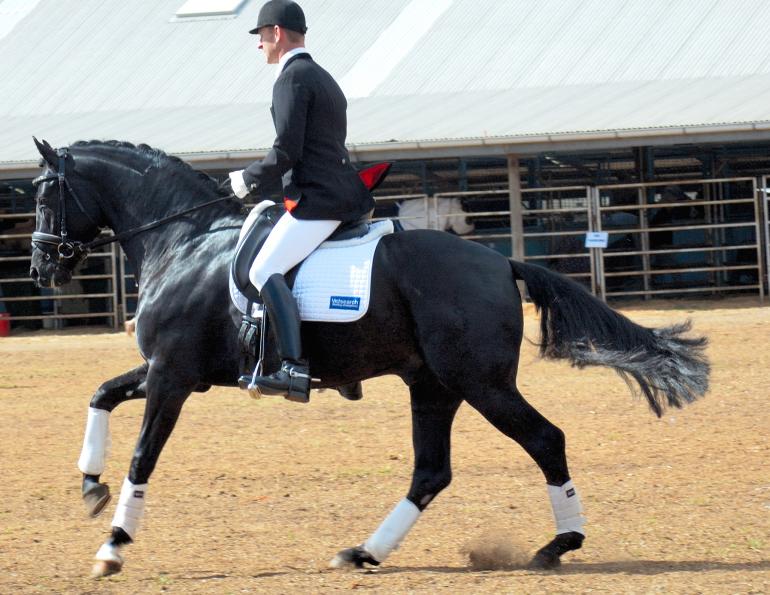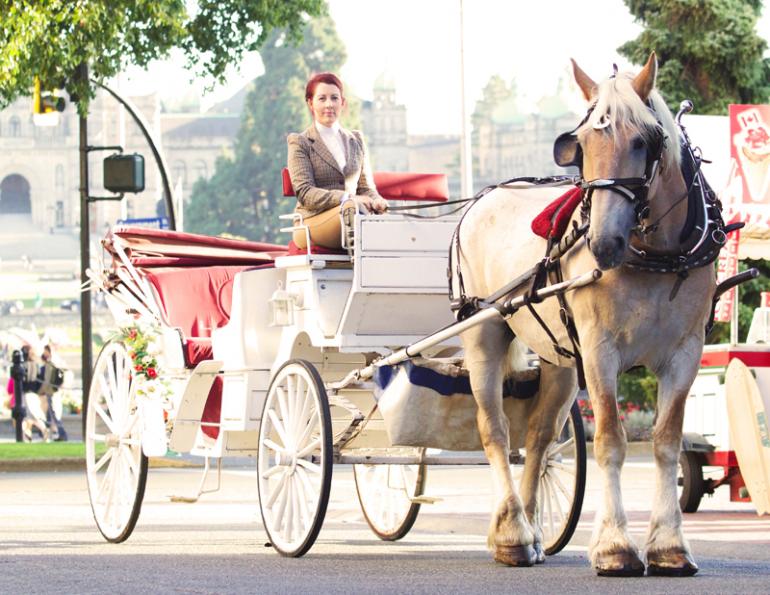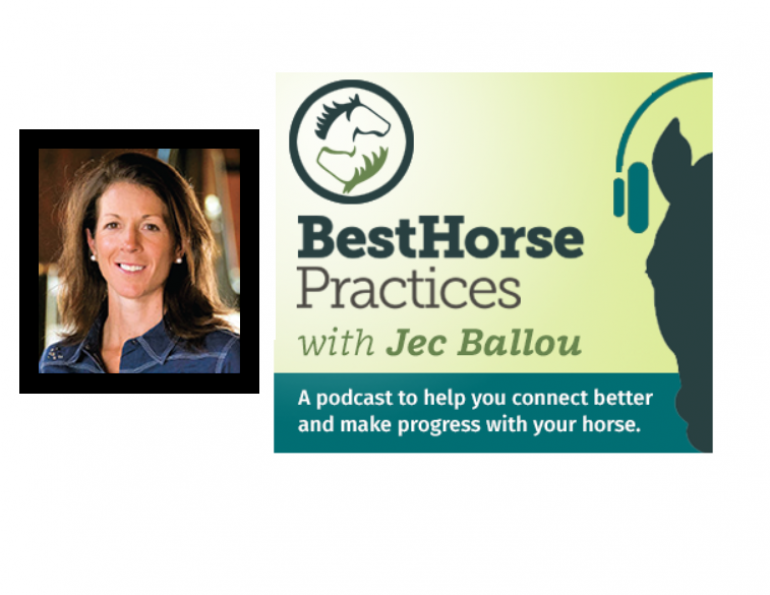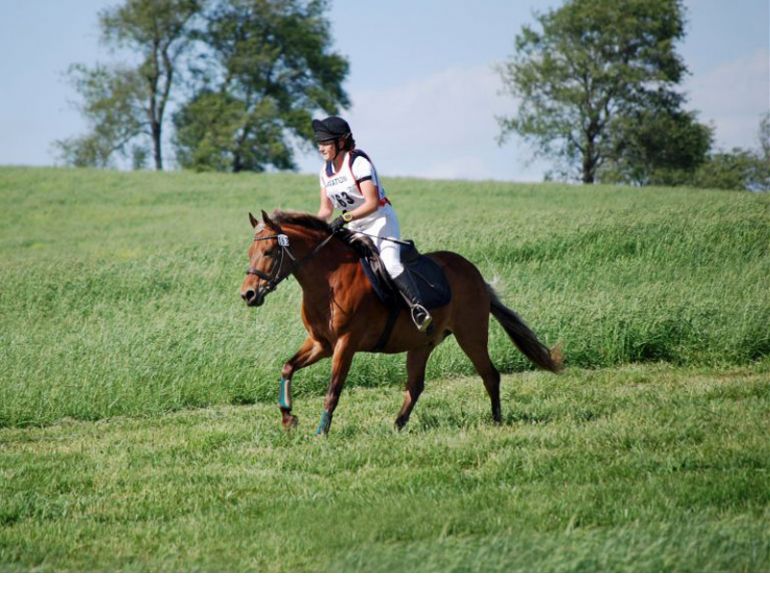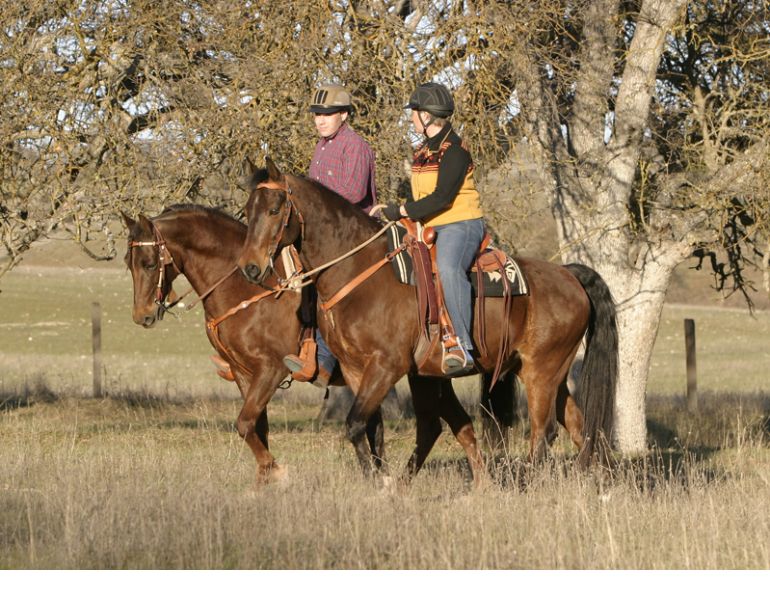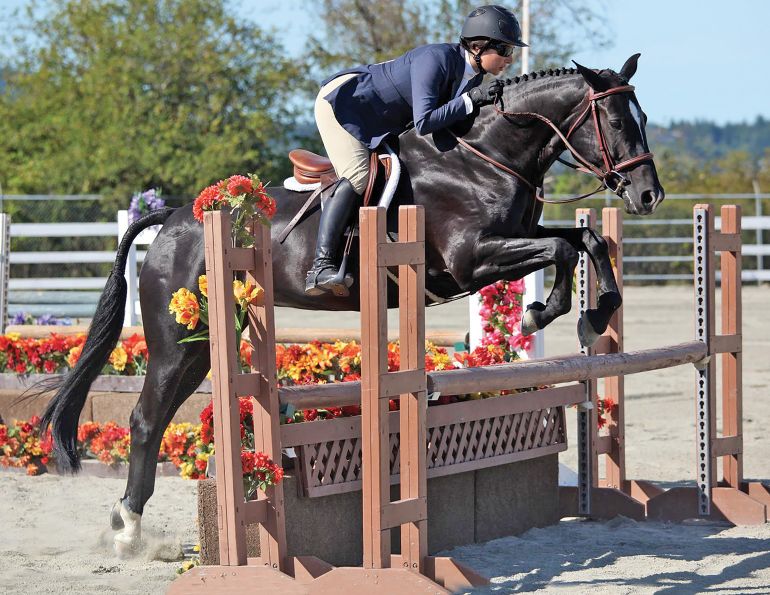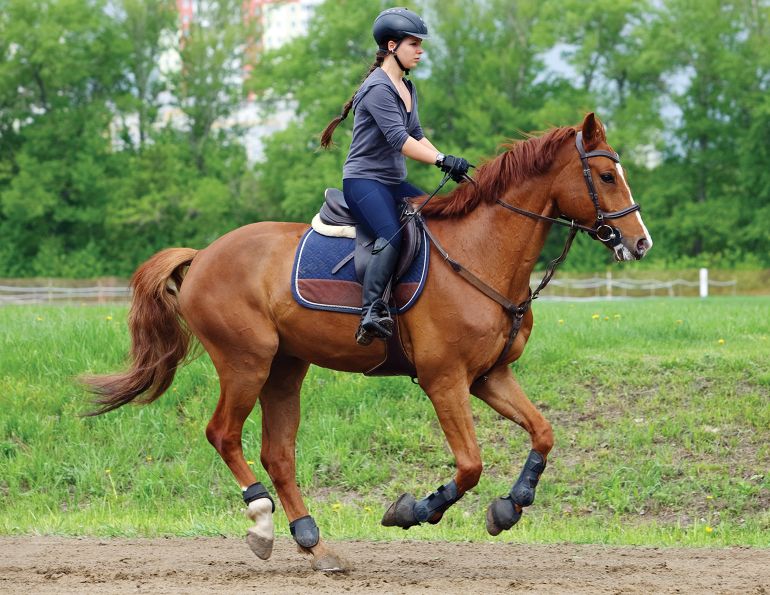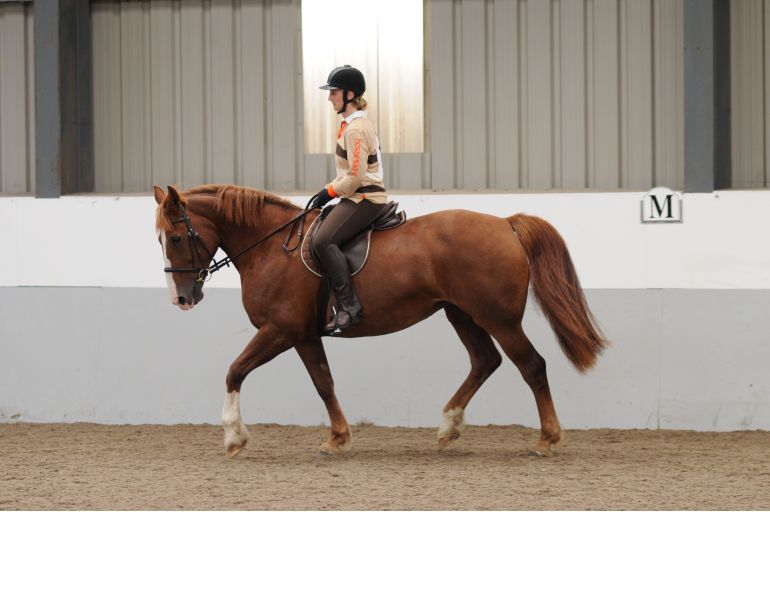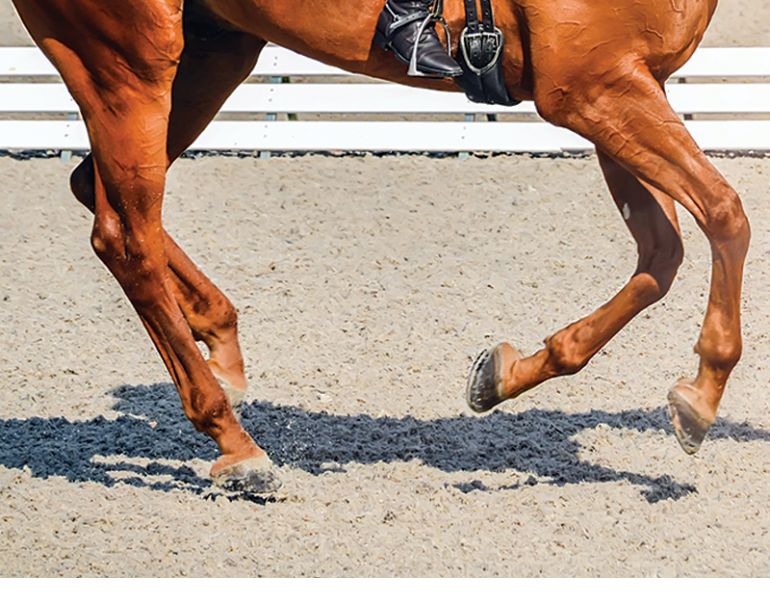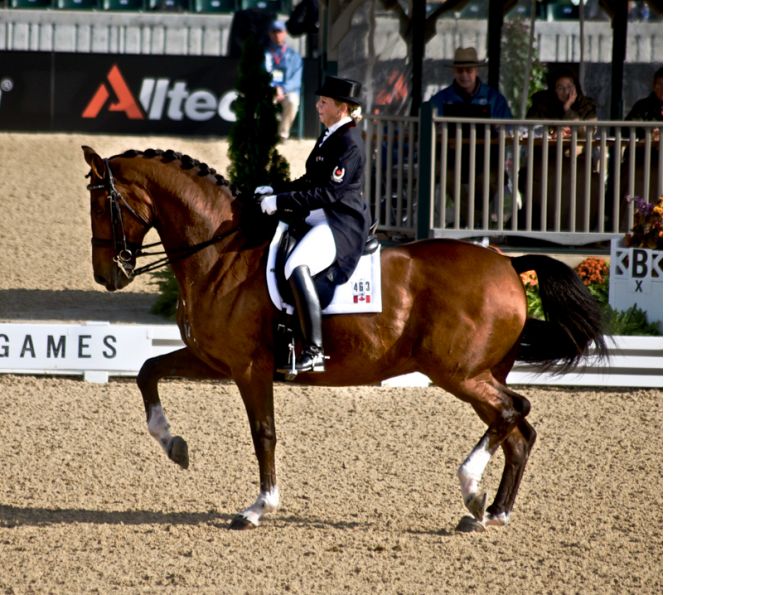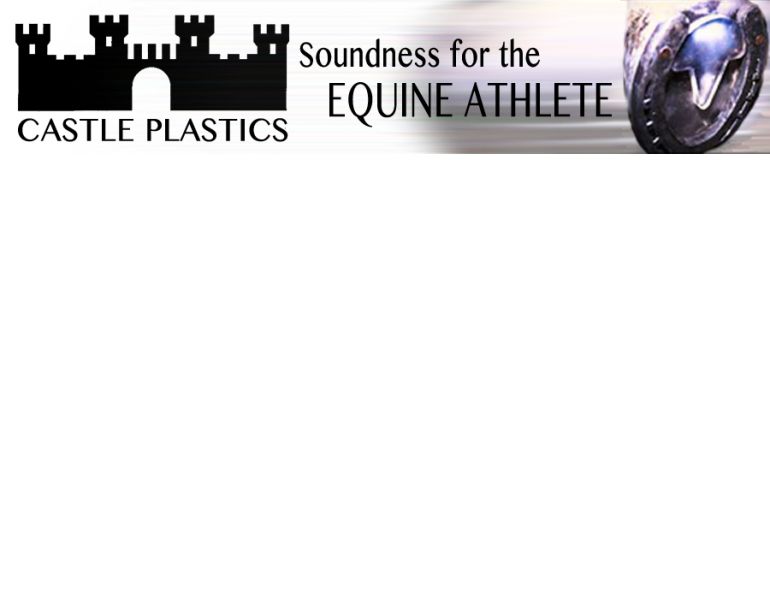By Jane Savoie
Many riders are confused by the term "engage the hind leg." They want to know exactly what engagement means and how to go about achieving it.
So here's some food for thought about engagement. Engagement simply means the bending (or the folding) of the joints of the hind leg. What follows are examples of asking for different degrees of engagement.
1. Start with baby engagement of the hind legs with the three second combination of aids that I call "the connecting aids" or "the connecting half halt." Connecting your horse will engage his hind legs to a degree because you're asking him to bring his hind legs underneath his body and come on the bit. BUT, those aids shouldn't be harsh. If your horse is reactive to your driving aids, the aids should only be a hair firmer than the light maintenance pressure you have with legs and reins when you're just riding around-that is, legs draped softly like a wet towel and the weight of the reins in your hands.
2. The "collecting half halt" (as opposed to the version of the half halt I described in #1 as the "connecting half halt") is the momentary closure of seat, leg and hand. The "collecting half halt" creates a greater degree of engagement. This half halt is done just as the inside hind leg is about to push off the ground. However, you can't use this version of the half halt until he's connected with the "connecting half halt."
3. The aid to ask for more "activity" within a gait is your inside leg. Your inside calf activates the inside hind leg of the horse. This is important on circles, corners, and curves as well as if you decide that the walk, trot, or canter feels too lazy. Activate your horse's inside hind leg for greater engagement by giving a squeeze with your inside calf. Do this when you feel his inside hind leg is about to leave the ground. (You can feel this moment because your inside seatbone will feel higher or like it's being pushed forward.)
4. Lastly, all of the lateral exercises that have a bend (shoulder-in, haunches-in, half-pass, pirouettes) engage the hind legs. As you bend your horse and then take him sideways, he has to increase the bending of the joints of the hind leg. It's like a mathematical formula. BEND+SIDEWAYS=ENGAGEMENT
About the Author - Jane Savoie has been long-listed by the USET with several horses, won nine Horse of the Year awards and three National Freestyle Championships, and was the reserve rider for the bronze medal winning U.S. Olympic Dressage Team in Barcelona, Spain. She was the Olympic dressage coach for the Canadian 3-Day Eventing Team in Atlanta in 1996 and Athens in 2004, and coached several top dressage and eventing riders in preparation for the 2000 Sydney Olympics, including team bronze medal winner Sue Blinks. The author of best-selling books That Winning Feeling!, Cross-Train Your Horse, and More Cross-Training, and producer of several dressage training DVDs, Jane is also a frequent contributor to many leading horse magazines and a popular motivational speaker. www.janesavoie.com



